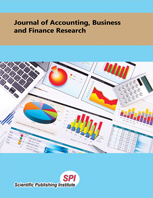The impact of macroeconomic variables on foreign direct investment in Nigeria
DOI:
https://doi.org/10.55217/102.v16i1.615Keywords:
Economic size, Exchange rate, FDI, Inflation, Macroeconomic variables, Monetary policy rate.Abstract
This study's main goal is to determine the effect that specific macroeconomic factors have on the amount of foreign direct investment (FDI) flowing into Nigeria. The ex post facto research design was adopted, and it used exchange rate, inflation rate, monetary policy rate (MPR), and gross domestic product growth (GDP) rate as the macroeconomic variables. The quantity of inflow between 1986 and 2020 was made up of FDI (dependent variable). Because the model variables were integrated in a mixed order of both level and first difference, the autoregressive distributed lag (ARDL) technique was used. The selected macroeconomic variables and FDI were bound by a long-run connection, according to the results of the ARDL bounds test for cointegration. The calculated short-run coefficients showed that GDP growth rate and monetary policy rate were the primary macroeconomic variables that considerably increased FDI inflow in Nigeria, whereas inflation and exchange rate were the major macroeconomic variables that significantly decreased FDI inflow. In the long term, the GDP growth rate and the exchange rate had a beneficial influence on FDI influx, whereas the monetary policy rate had a large negative effect. According to these empirical findings, it is advised that Nigeria's monetary authorities should support strong GDP growth, exchange rate stability, and efficient monetary policy rates in order to draw FDI into the country and create efficient foreign exchange policies that will attract foreign investors.


